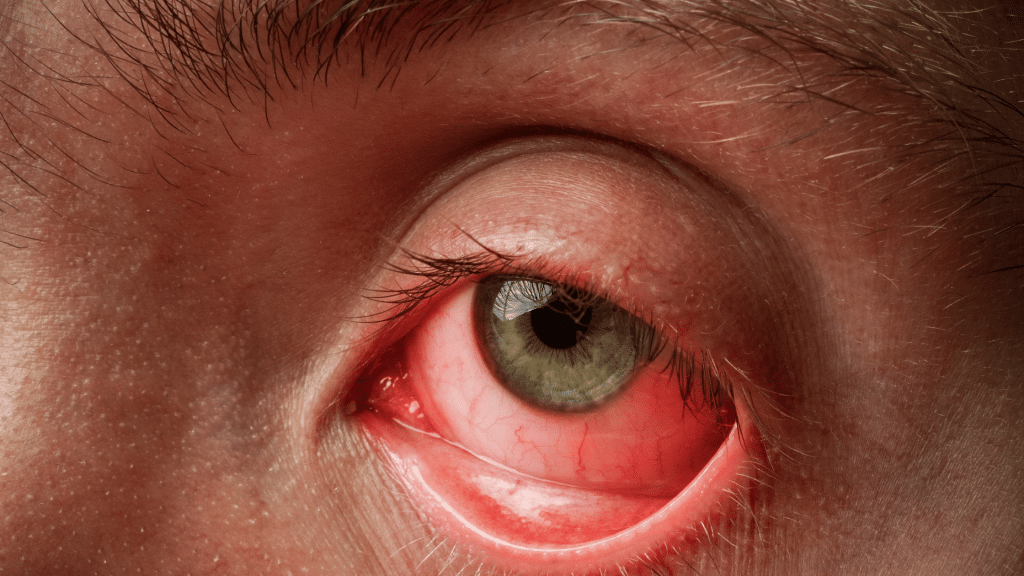Conjunctivitis is a common eye issue affecting a diverse population worldwide. It emerges when the conjunctiva, a sensitive membrane covering the eye’s white part and inner eyelids, becomes inflamed. This inflammation can stem from various sources, including bacterial and viral infections, irritants, or allergies. Each cause presents a unique challenge and requires a specialized approach for effective management and treatment. In the ensuing guide, we’ll delve deeply into the intricate landscape of this condition, unraveling its causes, and manifestations, exploring diagnostic approaches, and evaluating the treatment method.
Common Causes
Conjunctivitis, often referred to as pink eye, manifests in a variety of ways, each stemming from different origins. It’s crucial to distinguish between these to administer appropriate care. Online Ophthalmology consultation on Consultdoc facilitates instant access to medical advice, enabling individuals to promptly address their eye concerns.
Viral Infections:
A majority of cases stem from viral infections, with viruses like adenovirus leading the charge. Transmitted through direct contact with an infected individual or contaminated objects, it underscores the necessity of hygiene and caution.
Bacterial Cause:
These typically result in a more purulent or mucopurulent discharge and can be unilateral or bilateral. Common bacteria associated with this form of inflammation include Staphylococcus aureus and Haemophilus influenzae.
Irritant-Induced Cause:
Conjunctivitis can be a reaction to Chemical irritation, resulting from exposure to noxious substances like chlorine or pollutants. Exposure to these substances can also lead to eye irritation and redness.
Allergic Cause:
Allergic types are triggered by allergens like pollen, pet dander, or dust. It’s usually accompanied by itching, redness, and tearing, often occurring seasonally and affecting both eyes. With the convenience of online doctor consultation on Consultdoc, individuals can swiftly address these challenges, obtaining specialized care and treatment plans.
Symptoms of Conjunctivitis
Identifying the symptoms early can be instrumental in the effective management and treatment of medical conditions. They can vary greatly, encompassing physical discomfort and visible changes, often indicative of the underlying cause.
Redness (Erythema):
One of the hallmark symptoms of conjunctivitis is the noticeable redness of the white part of the eye, also known as the sclera. The degree of redness can vary, but it is a common indicator of ocular inflammation.
Eye Discharge:
The nature of eye discharge can be a key indicator of the underlying cause. Bacterial origins often yield thicker, yellowish discharge, a stark contrast to the clear or watery secretion resulting from irritants or allergies. For accurate diagnosis and personalized care, leveraging online GP services on Consultdoc can be invaluable, offering convenience and professional insights quickly and efficiently.
Gritty Sensation or Itching:
Many individuals with ocular inflammation report discomfort, such as a gritty sensation or itching in the eyes. This discomfort can be quite bothersome, often leading to excessive rubbing of the eyes, which may exacerbate the condition.
Swollen Eyelids:
Swelling of the eyelids, particularly the palpebral conjunctiva, can occur in response to the inflammation associated with conjunctivitis. This swelling can lead to discomfort and a visibly altered appearance of the eyes, often accompanying other common symptoms.
Diagnosis Journey
Diagnosing conjunctivitis involves a systematic process. When individuals present with red, irritated eyes, healthcare professionals conduct a comprehensive eye examination. GP near me service on Consultdoc can offer access to specialized guidance from professionals, facilitating a quicker diagnosis and effective treatment plan to overcome this condition. This examination assesses the severity of redness, the presence of discharge, and any potential eye discomfort. The diagnostic journey also includes questions about recent exposure to irritants, allergies, or potential sources of infection.
Treatment Strategies
Treatment strategies are tailored according to the specific symptoms and their underlying causes. Implementing appropriate treatments not only alleviates discomfort but also targets the root cause, promoting optimal eye health and preventing recurrence.
Relief and Antiviral Medications
Viral types necessitate supportive care with artificial tears and cold compresses to relieve symptoms and enhance comfort. In some cases, antiviral medications in the form of eye drops or oral pills may be prescribed to target the viral infection directly.
Antibiotics for Bacterial Clearing
In bacterial eye inflammation cases, antibacterial eye drops or ointments are potent. They alleviate discomfort and expedite healing. These antibiotics are typically administered as eye drops, which can effectively clear the bacterial culprit.
Home Remedies
Utilizing warm or cold compresses can mitigate irritation and redness effectively. They offer immediate relief and soothe inflamed eyes. In cases induced by irritants, a thorough rinse with clean, warm water helps expunge the offending substances, providing relief and reducing the risk of prolonged inflammation and discomfort.
Preventive Measures
Prevention strategies emphasize minimizing exposure to causative agents and maintaining excellent eye hygiene. When it comes to viral-induced inflammation, practicing good hand hygiene, avoiding close contact with infected individuals, and refraining from touching the eyes can significantly reduce the risk of transmission. Bacterial-induced inflammation can be mitigated by practicing similar hygiene measures and avoiding sharing personal items like towels or makeup. In cases of irritant-induced inflammation, meticulous care should be taken when handling substances that can irritate the eyes. Wearing protective eyewear, like swimming goggles, can also be helpful in certain situations.
Conclusion
Addressing conjunctivitis requires a comprehensive approach, encompassing effective treatments and preventive strategies. This condition, while common, can be managed efficiently through a combination of medications, home remedies, and lifestyle adaptations. Cooperation between healthcare providers and patients is essential, emphasizing education and preventive measures to minimize recurrence and transmission. A holistic strategy, integrating individual actions and medical interventions, ensures the safeguarding of eyes and overall well-being. This collective effort paves the way for a reduction in cases, enhancing the quality of life and societal health.
